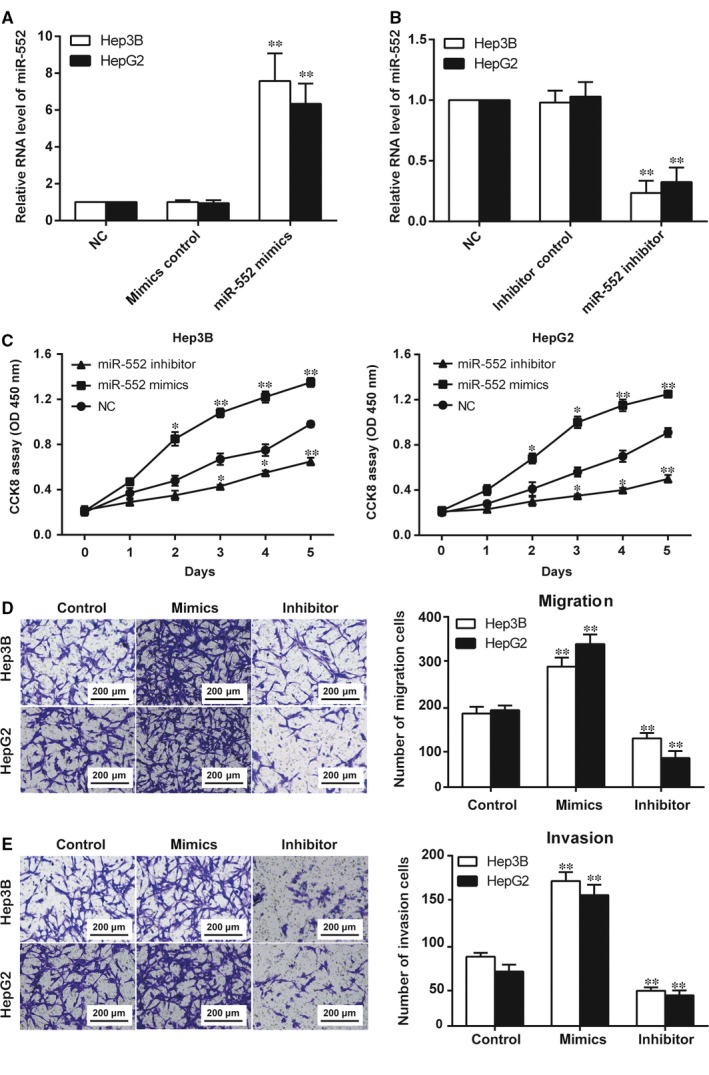Figure 3.

MiR‐552 targeted AJAP1 and inhibited AJAP1 expression. (A) The predicted binding sequences of miR‐552 and AJAP1 were obtained from TagetScanHuman 7.1. The sequences of wild‐type (WT) and mutated (MUT) AJAP1 are also shown. (B) A luciferase reporter gene assay was used based on the construction of WT AJAP1 3’‐UTR and MUT AJAP1 3′‐UTR. The relative luciferase activities in the Hep3B and HepG2 cell lines in the WT AJAP1 3′‐UTR group were found to be significantly lower than those of cells in the miR‐552 NC group, whereas the MUT AJAP1 3′‐UTR group differed insignificantly from its counterpart (the NC group) in both cell lines. *, P < 0.05 compared to the NC group. (C) RT‐qPCR results showed the expression levels of AJAP1 in Hep3B and HepG2 cells transfected with miR‐552 mimics and miR‐552 inhibitor. AJAP1 expression was found to be lower when miR‐552 was up‐regulated, yet higher expression was detected in the miR‐552 inhibitor group. *, P < 0.05 compared to the NC group. (D) Western blotting was used to measure the expression level of AJAP1 in Hep3B and HepG2 cells transfected with miR‐552 mimics and miR‐552 inhibitor. The miR‐552 mimics led to lower AJAP1 expression, while the miR‐552 inhibitor led to higher AJAP1 expression. (E) Among the 81 pairs of HCC and adjacent tissues, AJAP1 was shown to have lower expression in tumour tissues based on the RT‐qPCR experiment. ****, P < 0.0001 compared to the adjacent tissue group. (F) Relative expression of miR‐552 was negatively correlated with that of AJAP1 in HCC tissues, which was showed a very significant correlation (P < 0.0001)
